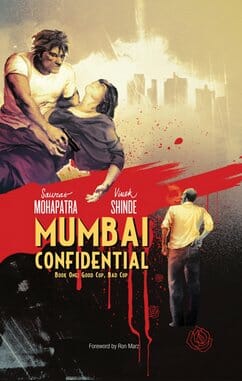Mumbai Confidential Book 1: Good Cop, Bad Cop by Saurav Mohapatra

Writer: Saurav Mohapatra
Artists: Vivek Laxman Shinde; shorts by Vinay Brahmania, Shounak Jog, Sid Kotian, Devaki Neogi and Saumin Patel
Publisher: Archaia
Release Date: May 15, 2013
-

-

-

-

-

-

-

-

-

-

-

-

-

-

-

-

-

-

-

-

-

-

-

-

-

-

-

-

-

-

-

-

-

-

-

-

-

-

-

-








































